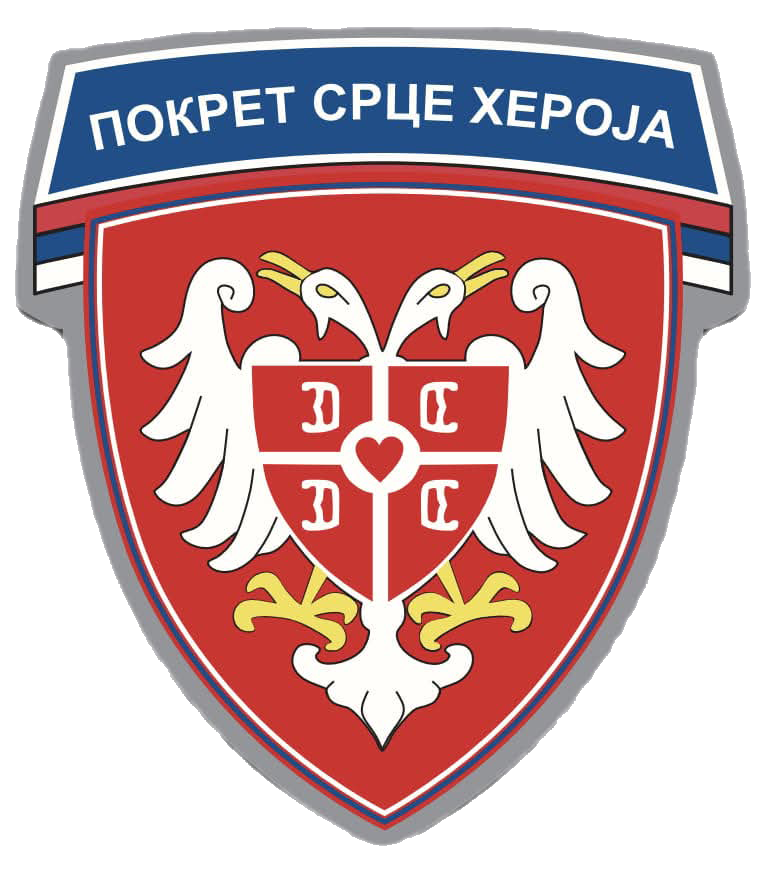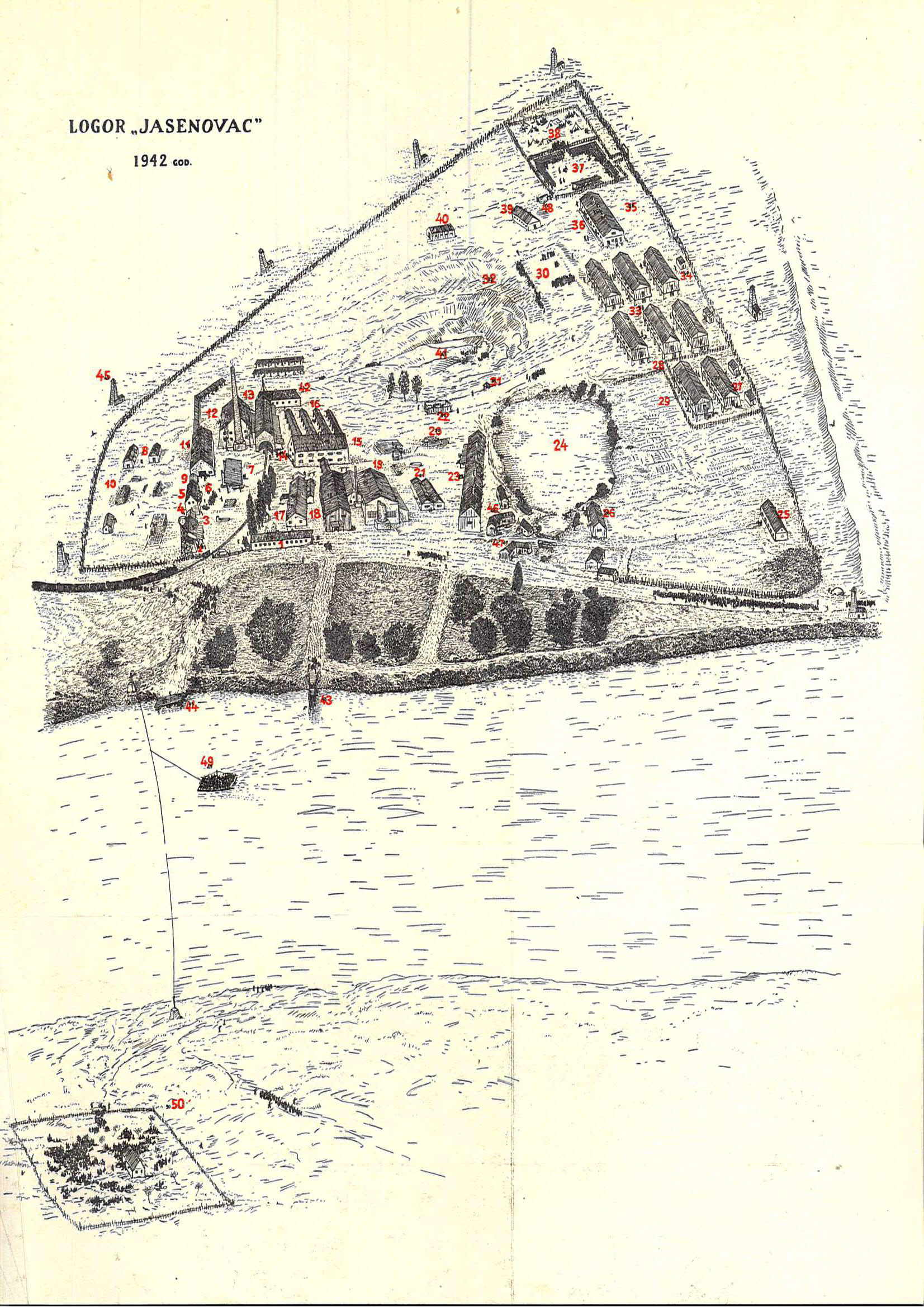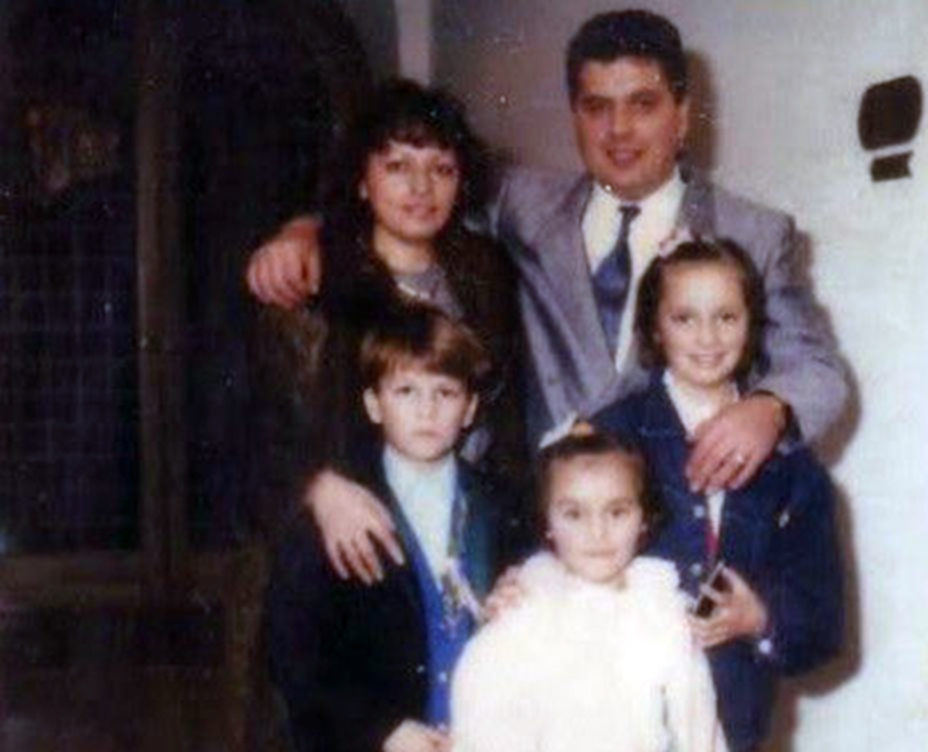Locations of crimes
- Details
- Written by: SH
- Category: Category (en-GB)
- Hits: 5810
ORGANIZER:
Association "Hero's Heart Movement"
"The Hero's Heart Movement and we, its members, are not heroes, we are just candles that illuminate the path of suffering of the Serbian people."
President of the Hero's Heart Movement Association - Sinisa Z. Ivanović
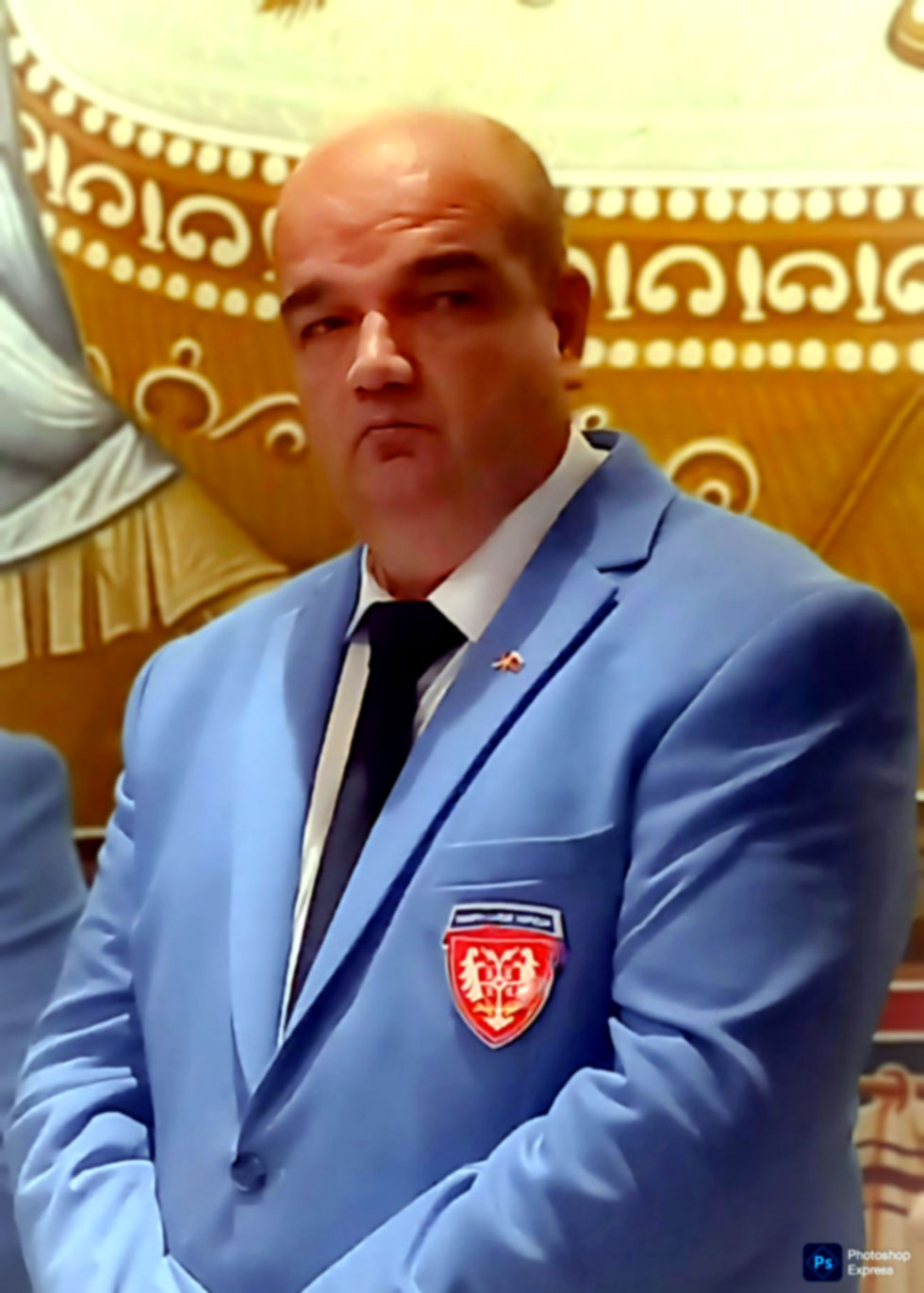
Like the last guardian,
of the hearth and the threshold,
with his fiddle,
Miloš,
appears every evening;
And with a heroic song,
which is dear to him,
he cuts off the light sleep of his evil enemy!
Deputy President of the Association Ilija Ćirković
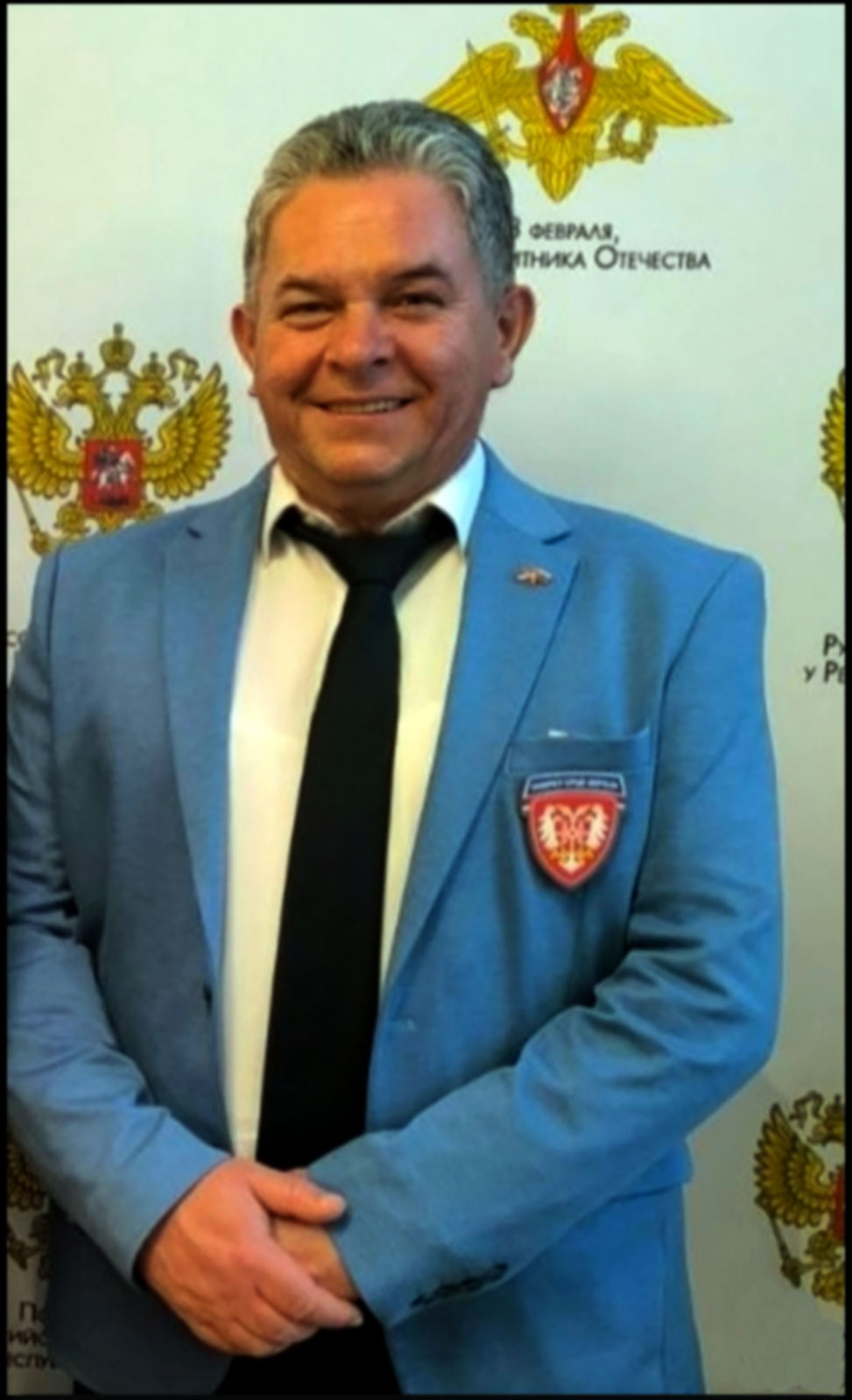
Collaborators:
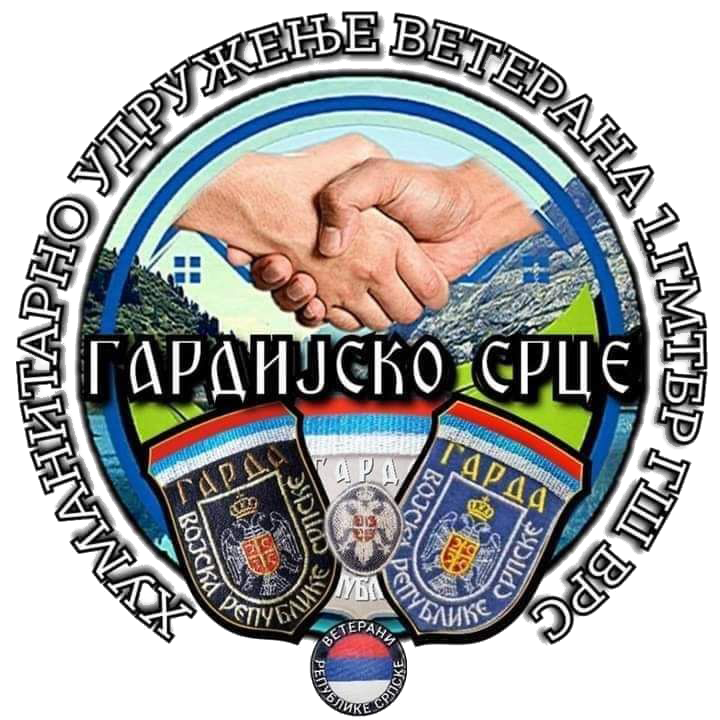
Guard's Heart - Banja Luka
Federation of Fighters' Associations Petrovac na Mlavi
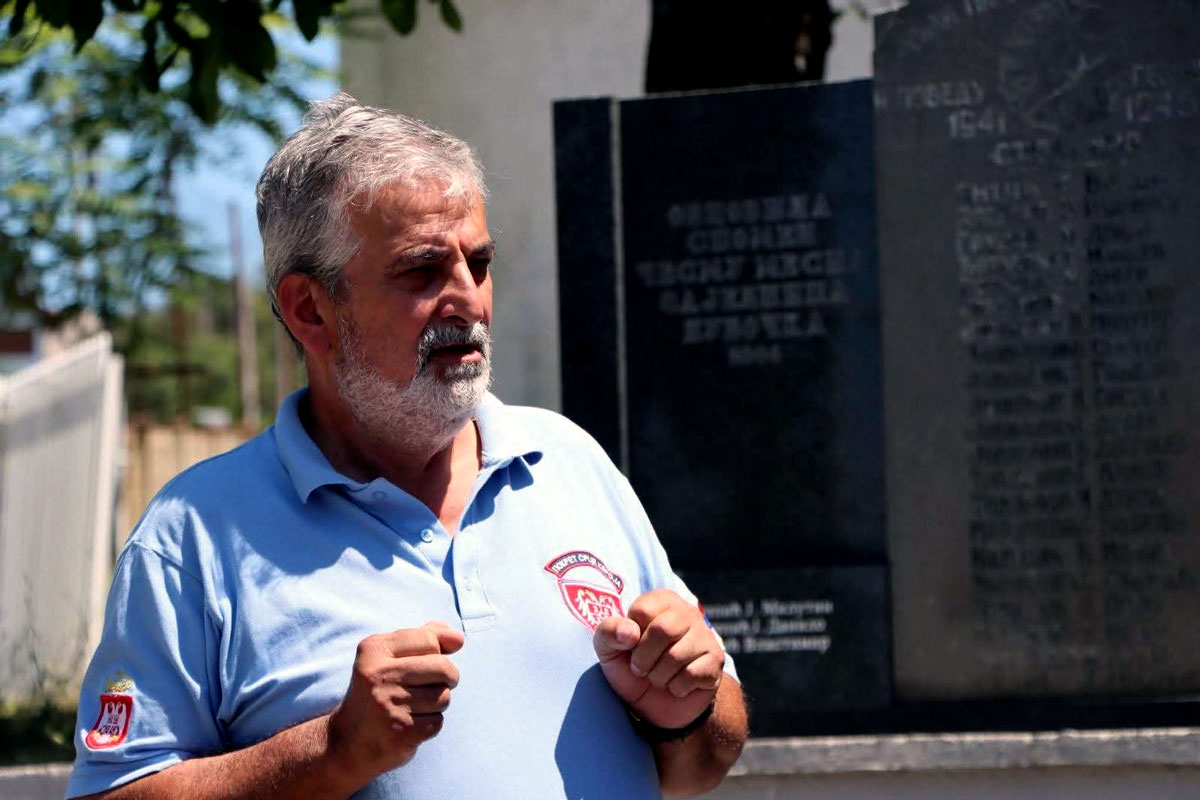
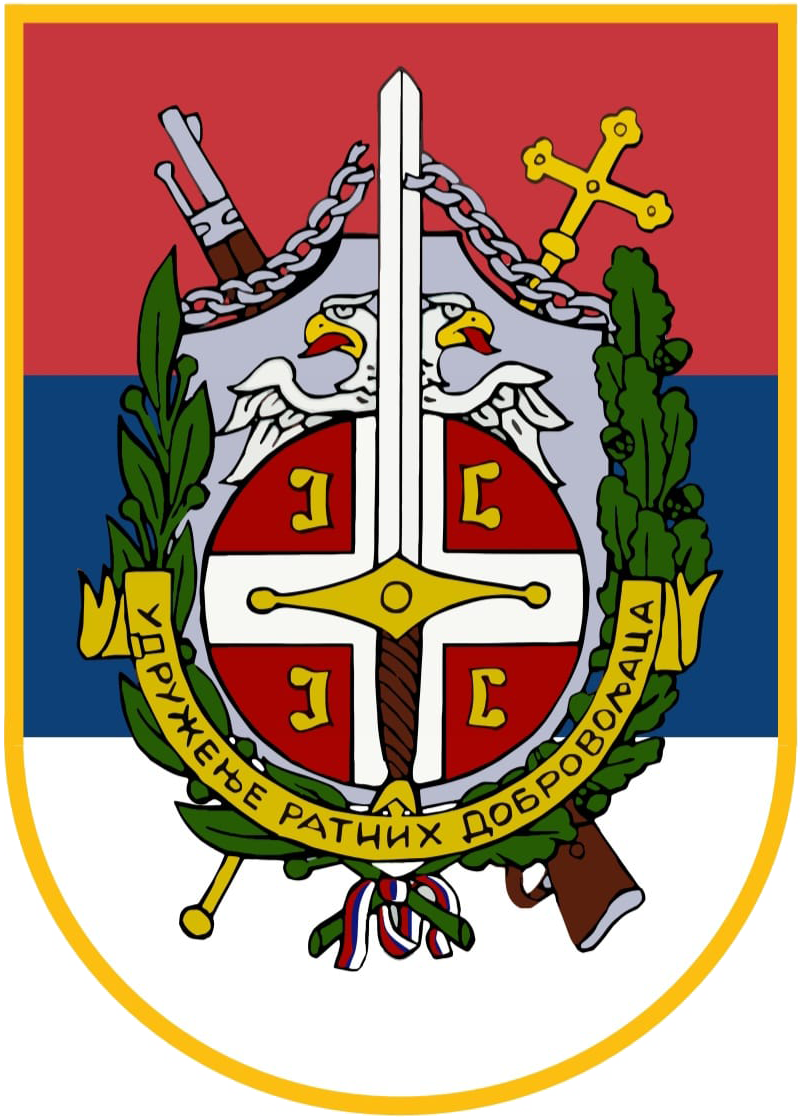 Association of War Volunteers 1912-1918, their descendants and admirers
Association of War Volunteers 1912-1918, their descendants and admirers
PATRON:
Under the auspices of 
Галерија / Galerija / Gallery / Галерея
- Details
- Written by: УМ
- Category: Category (en-GB)
- Hits: 49
Е-pošta:
- Details
- Written by: SH
- Parent Category: Category (en-GB)
- Category: Locations of crimes
- Hits: 42
Appearance and Location of the Camp
The Jasenovac Camp was a death camp located near the town of the same name in the so-called Independent State of Croatia during World War II. It was established in August 1941 and destroyed by the Ustaše in April 1945.
The camp was built between August 1941 and February 1942. Most of it was situated in the town of Jasenovac, about 100 kilometers southeast of Zagreb. Camps I and II were located in the villages of Bročice and Krapje, but they were soon dismantled due to frequent flooding. Prisoners were transferred to the Ciglana Camp (Jasenovac III), which was the largest and included a crematorium. Executions were carried out in Donja Gradina, on the opposite side of the Sava River. A children’s camp was located in Sisak, and a women’s camp in Stara Gradiška, southeast of Jasenovac, although women and children were also held in Jasenovac itself.
- Details
- Written by: SN
- Parent Category: Federation of Bosnia and Herzegovina
- Category: Zenica
- Hits: 52
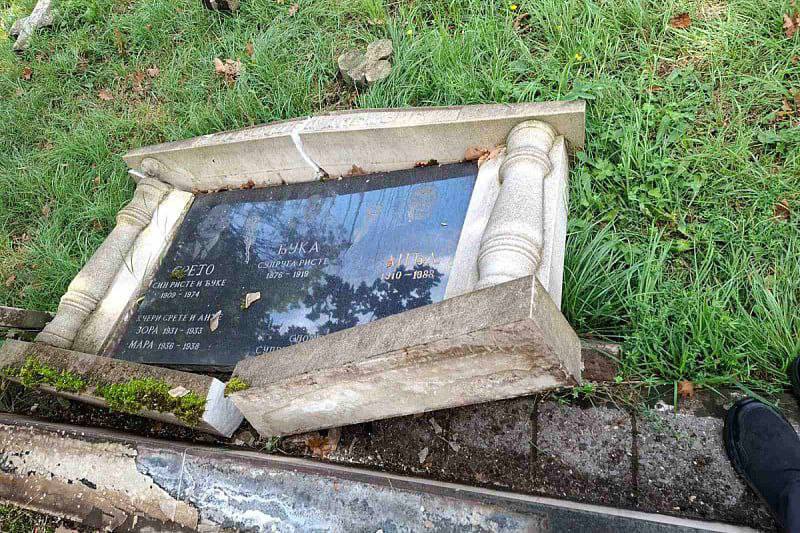
In the Pečuj neighborhood of Zenica today, the Serbian Orthodox cemetery has been completely devastated.
Over 60 tombstones have been destroyed, crosses broken, and Cyrillic lettering scraped off.
No commentary is needed.
Read more: Zenica, Central Bosnia — Serbian Cemetery Destroyed!
- Details
- Written by: SH
- Parent Category: Montenegro
- Category: Plav
- Hits: 59
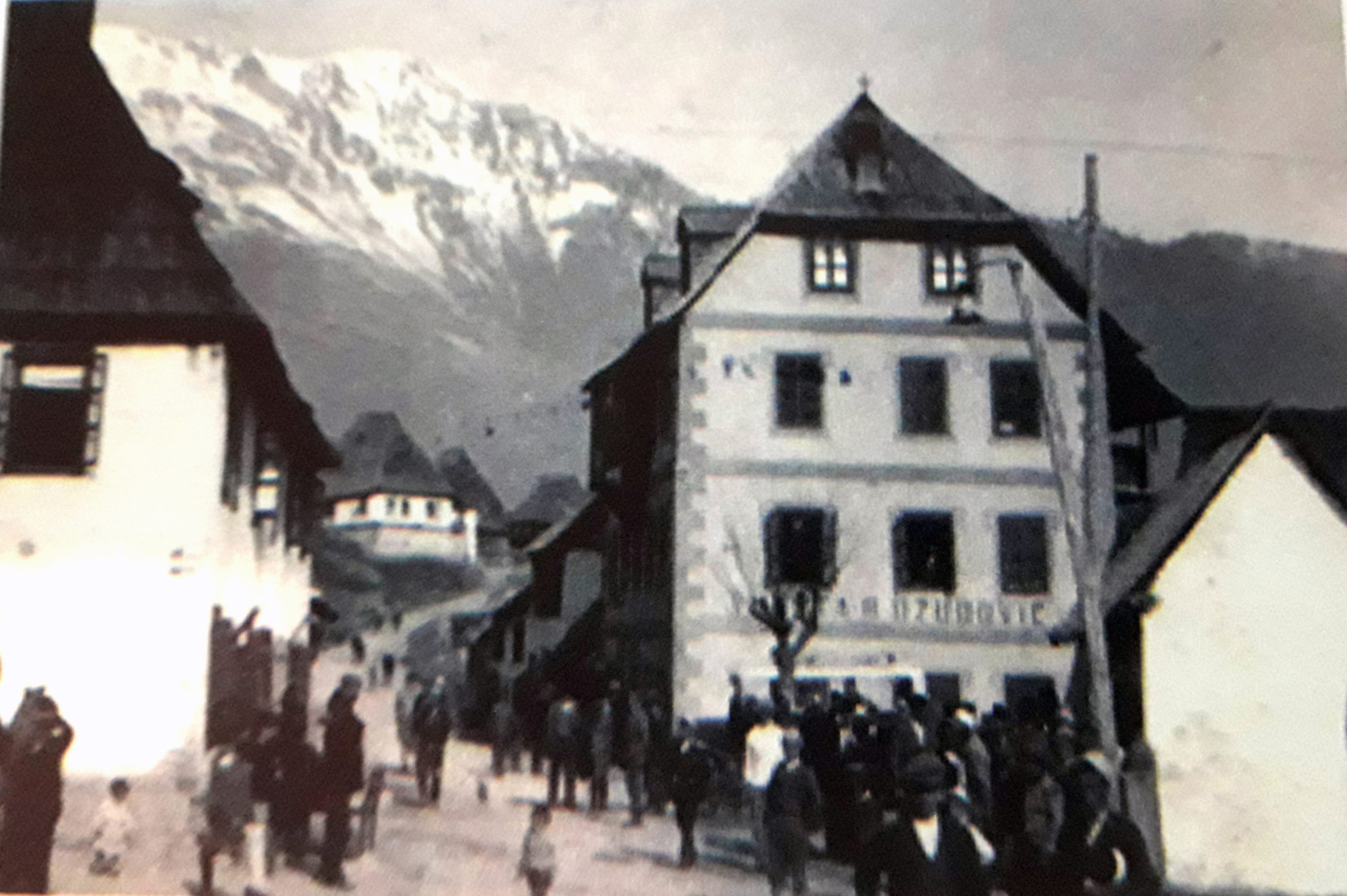
At the beginning of July 1941, local quisling collaborators and servants of the occupiers – the Vulentari and Balists, led by Shems, Riza, and Šaba Ferović – established the notorious Plav camp. It was a concentration camp and the only camp for women and children in Montenegro. The largest number of victims of this execution site were children.
The fascist motto was adopted: "If you want to kill a people, first kill their children!" Therefore, it is no coincidence that children were among the most numerous victims of the genocide in Velika on July 28, 1944.
After the uprising was suppressed, the rebels went into guerrilla warfare, while their families remained in their homes, though some families fled toward the Vasojevići region.Some refugee families from Novšići, Velika, and Gornja Rženica were taken under the "besa" (a traditional Albanian oath of protection) by Albanians from Gornja Rženica – Džema Tahirović, Miljuš Novović, and others; guaranteeing them safe shelter, they housed them in their homes. However, when armed Balists and Vulentari from Plav and Gusinje arrived, neither Džema nor Miljuš could be found. The caught Orthodox families were expelled from their homes, their belongings were looted, and they were taken to the camp in Plav.
Read more: Concentration camp in the house of the Džudović family in Plav!
- Details
- Written by: SH
- Parent Category: Croatia
- Category: Zagreb
- Hits: 230
Aleksandra Zec was the daughter of Zagreb butcher Mihajlo Zec, and probably a completely ordinary twelve-year-old girl who would not have deserved to be written about in any way - if she had not been brutally murdered.
At around 11 p.m. on December 7, 1991, Sinisa Rimac, Munib Suljic, Igor Mikola, Nebojsa Hodak and Suzana Zivanovic (members of Mercep's unit) broke into her home at Poljanicka Street 22 in Zagreb's Tresnjevka neighborhood with the intention of arresting Mihajlo Zec for his alleged connections with the rebellious Krajina Serbs. He somehow managed to run out into the street and tried to escape, but was shot by Sinisa Rimac from a distance of about thirty meters.[1]
After that, they tied up 12-year-old Aleksandra and her mother Marija, put them in a van (without license plates) and drove to the Adolfovac mountain lodge on Sljeme, where they killed Aleksandra and her mother and threw them into a garbage pit.
A later investigation revealed that Sinisa Rimac, who had previously killed her father, had asked that Aleksandar not be killed, but that everyone else was against it because she had seen them. She acted in cold blood (with her hands and feet tied) was killed by Munib Suljić with a Heckler automatic rifle, shooting her in the back of the head. [1] Her sister Gordana and brother Dušan managed to survive because they hid in the house and thus escaped the killers.
Read more: We Have Not Forgotten: The Suffering of the Zec Family in Zagreb
- Details
- Written by: SH
- Parent Category: Croatia
- Category: Zagreb
- Hits: 62
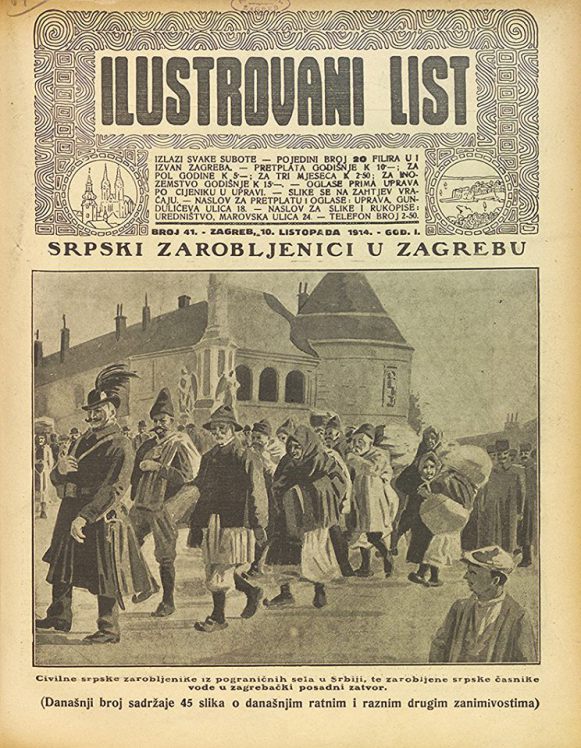 "Illustrated Sheet" was a Croatian illustrated newspaper published during the First World War, reporting on war-related events and publishing photo reports. The newspaper was issued on Saturdays from January 1914 until December 1918, when it changed its name to "Osvit". In issue number 41, dated October 10, 1914, Illustrated Sheet featured on the front page a picture of Serbian prisoners in Zagreb, and inside, a story about them, which we present here in full.
"Illustrated Sheet" was a Croatian illustrated newspaper published during the First World War, reporting on war-related events and publishing photo reports. The newspaper was issued on Saturdays from January 1914 until December 1918, when it changed its name to "Osvit". In issue number 41, dated October 10, 1914, Illustrated Sheet featured on the front page a picture of Serbian prisoners in Zagreb, and inside, a story about them, which we present here in full.
SERBIAN PRISONERS IN ZAGREB
Increasingly, groups of captured Serbian wretches are seen in Zagreb, driven under bayonet to their destinations — naturally, to prison. These are mostly women, elderly people, and children, driven from the border so they won’t hinder the army in its operations. Such transports can number up to 50 heads.
It is understood that in Zagreb, every such prisoner, especially if wearing loose trousers and a sheepskin hat, is considered a komita (rebel), and the public is greatly disappointed by the appearance of these so-called komitas. These people look so miserable that they evoke sympathy rather than anger.
It should be known that real Serbian komitas, caught in the act, are executed on the spot by shooting; therefore, everyone who can escape flees from the army, and those who remain are sent to a secure place.
(Photo: Civil Serbian prisoners from border villages in Serbia and captured Serbian officers being led to the Zagreb garrison prison)
- Details
- Written by: УМ
- Parent Category: Croatia
- Category: Split
- Hits: 39
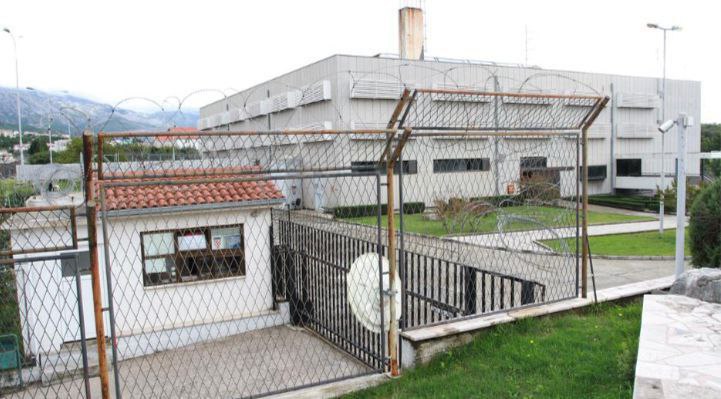 The Lora camp was a military investigation prison in Split, which during the war in Croatia (1991–1997) became known as a place where Serbs — both prisoners of war and civilians — were illegally detained, tortured, and killed. Numerous witnesses spoke of severe abuse, torture, and murders inside the camp. Several officers and soldiers of the Croatian Army were later convicted by Croatian courts for war crimes committed in Lora.
The Lora camp was a military investigation prison in Split, which during the war in Croatia (1991–1997) became known as a place where Serbs — both prisoners of war and civilians — were illegally detained, tortured, and killed. Numerous witnesses spoke of severe abuse, torture, and murders inside the camp. Several officers and soldiers of the Croatian Army were later convicted by Croatian courts for war crimes committed in Lora.
Subcategories
Locations of crimes Article Count: 24
Places of crimes against the Serbian people. Current states, cities, settlements, villages, towns, regions, etc.
Bosnia and Herzegovina Article Count: 1
Bosnia and Herzegovina (abbreviated BiH), informally Bosnia, a country in Southeastern Europe which is located on the Balkan Peninsula. It borders Serbia to the east, Montenegroin the southeast and Croatia in the north and southwest. In the south, it has access to the Adriatic Sea. The northern and larger part of the country is occupied by the region of Bosnia, and the southern and smaller part by the region of Herzegovina. The capital and largest city is Sarajevo. The place of crimes against Serbs.
Federation of Bosnia and Herzegovina Article Count: 1
The Federation of Bosnia and Herzegovina is one of the two entities in Bosnia and Herzegovina, in addition to the Republika Srpska. It occupies about 51% of the territory of Bosnia and Herzegovina. It was founded on March 18, 1994, with the signing of the Washington Agreement, which ended the Muslim-Croat conflict. The capital is Sarajevo, along with Mostar, where the headquarters of four federal ministries are located. With the latest constitutional changes, the Serbs also became a constituent nation of the Federation, so that currently there is a declarative constitution of all three nations in the entire territory of the Federation. The place of crimes against Serbs.
Zenica Article Count: 1
Zenica - a city, the administrative and economic center of the Zenica-Doboj canton and the local self-government unit of the same name in the Federation of BiH (Bosnia and Herzegovina). It is located in the valley of the Bosna River, about 70 km northwest of Sarajevo. The city is known for its ironworks and other heavy industry, but also as an important university center. The place of crimes against Serbs.
Montenegro Article Count: 1
Montenegro is a country in Southeast Europe, located on the Balkan Peninsula. It borders Bosnia and Herzegovina in the northwest, Serbia in the east, Albania in the southeast and Croatia in the west, while in the southwest it has a coast along the Adriatic Sea. The place of crimes against Serbs.
Plav Article Count: 1
Plav is a city and seat of the municipality of the same name in the east of Montenegro. According to the 2023 census, there were 4,121 inhabitants. It is located at the foot of the Prokletije mountain massif, on the river Lim. The place of crimes against Serbs.
Croatia Article Count: 6
Croatia, officially the Republic of Croatia, is a country in Central and Southeastern Europe, on the coast of the Adriatic Sea. It borders Slovenia in the northwest, Hungary in the northeast, Serbia in the east, Bosnia and Herzegovina and Montenegro in the southeast, and Italy in the west. Place of crime against Serbs!
Zagreb Article Count: 2
Zagreb is the capital and largest city of Croatia. It is located in the north of the country, along the Sava river, on the southern slopes of the Medvednica mountain. Zagreb is located near the international border between Croatia and Slovenia. Place of crime against Serbs!
Split Article Count: 1
Split in older texts also written as Spalato or Splet — is the second-largest city in Croatia and the administrative center of Split-Dalmatia County. According to the 2021 census, it had 149,830 inhabitants. As the largest city in Dalmatia and an important historical and cultural center of Croatia, it has been included on the UNESCO World Heritage List.
Šibenik Article Count: 1
Šibenik is a city in Croatia and the administrative center of Šibenik-Knin County. According to the 2021 census, the city had a population of 42,599, while the settlement itself had 31,115 inhabitants. It is located in central Dalmatia, at the mouth of the Krka River into the Adriatic Sea.
Kordun Article Count: 1
Kordun (Croatian: Kordun) is a geographical and historical region that covers the area between Petrova Gora and the Mrežnica River in present-day Croatia. Between 1990 and 1995, Kordun was part of the SAO Krajina and the Republic of Serbian Krajina.
Klupice Article Count: 1
The village of Klupice is located in the Vojnić municipality, in the historical and geographical region of Kordun in Croatia, between Petrova Gora and the Mrežnica River. Before the war of 1991–1995, the village had a predominantly Serbian population and was part of the broader Kordun region, an area with a rich history and significance in the context of the Serbian community in Croatia.
Virovitica-Podravina County Article Count: 1
Virovitica-Podravina County is located in northern Croatia. It is situated in the Podravina region in northern Slavonia, with its administrative center in Virovitica. It borders Požega-Slavonia County to the south, Koprivnica-Križevci County and Bjelovar-Bilogora County to the west, and Osijek-Baranja County to the east. According to preliminary results of the 2021 census, the county had a population of 70,660.
Virovitica Article Count: 1
Virovitica is a city in Croatia and the administrative center of Virovitica-Podravina County. According to the 2011 census, the city had a population of 21,291, while the urban settlement itself had 14,688 inhabitants.
North Macedonia Article Count: 2
North Macedonia, officially the Republic of North Macedonia (formerly SR Macedonia and Old Serbia), is a country in Southeastern Europe. It borders Greece to the south, Albania to the west, Bulgaria to the east and Serbia to the north. It occupies approximately one third of the territory of the larger geographical region of Macedonia. The capital and largest city is Skopje.
Kumanovo Article Count: 1
Kumanovo is the second largest city in North Macedonia, after Skopje. It is the seat of the municipality of the same name, as well as the main urban settlement of the Northeast Statistical Area within the state. It is located in the northeastern part of North Macedonia at an altitude of 333 m.
Greece Article Count: 1
Greece, officially the Republic of Greece, is a country in Southeastern Europe. It is located in the Balkans, between the Aegean Sea to the east, the Ionian Sea to the west and the Mediterranean Sea to the south. It borders Albania to the northwest, North Macedonia and Bulgaria to the north, and Turkey to the northeast. Place of crime against Serbs!
Serbia Article Count: 11
Serbia, officially the Republic of Serbia, is a country in Central and Southeastern Europe. It occupies most of the Balkan Peninsula and a smaller part of the Pannonian Plain. It borders Hungary to the north, Romania to the northeast, Bulgaria to the east, North Macedonia to the south, Albania and Montenegro to the southwest, and Bosnia and Herzegovina and Croatia to the west. It has a population of about eight million. The capital and largest city is Belgrade, which is among the oldest and largest cities in Southeastern Europe. The official language is Serbian, and the official currency is the Serbian dinar.
Kosovo and Metohija Article Count: 10
Косово и Метохија — скраћено КиМ, званично Аутономна Покрајина Косово и Метохија — АПКиМ, понекад кратко Косово, или Космет (од Косово и Метохија), је аутономна покрајина у саставу Србије. Налази се у средишту Балканског полуострва, а чине је области Косово и Метохија. Граничи се на југоистоку са Северном Македонијом, на југозападу са Албанијом и на западу са Црном Гором. Према попису из 2024. било је 1.586.659 становника. Службени језици су српски и албански, а седиште администрације се налази у Приштини.
Gjakova Article Count: 1
Đakovica is an urban settlement and the seat of the municipality of the same name in Serbia, located in the southwestern part of Kosovo and Metohija and belonging to the Peć Administrative District. According to the 2024 census, there were 41,809 inhabitants. It is located in the west of Metohija, between Peć and Prizren, while it is about 100 km from the Adriatic Sea coast.
Lipljan Article Count: 2
Lipljan is an urban settlement and the administrative center of the municipality of the same name in Serbia, located in the central part of Kosovo and Metohija, and it belongs to the Kosovo administrative district. According to the 2024 census, it had 13,092 inhabitants. It is situated 16 km south of Priština, at the confluence of the Janjevka River with the Sitnica River, and lies on the main route connecting Priština with Skopje and Prizren.
Lipljan in Kosovo and Metohija a site of suffering for Serbs
Peć Article Count: 1
Peć is an urban settlement and the administrative center of the municipality of the same name in Serbia, located in the western part of Kosovo and Metohija. It belongs to the Peć administrative district. According to the 2024 census, it had 41,171 inhabitants.
The town is situated on the Peć Bistrica River, a tributary of the White Drin, near the Prokletije mountains to the east. The Rugova Gorge, one of the longest and deepest gorges in Europe, is located about three kilometers from the city of Peć.
The city is 250 km north of Tirana, 150 km northwest of Skopje, and 280 km from Podgorica.
In the Middle Ages, the city was the seat of the Serbian Orthodox Church from the 13th century. The Peć Patriarchate Monastery is part of UNESCO's World Heritage site of Medieval Monuments in Kosovo
Camps Article Count: 1
Camps in which Serbs suffered
First world war Article Count: 0
Camps in the First World War where Serbs suffered
Kosovo Field Article Count: 1
The Municipality of Kosovo Polje is a municipality in the Republic of Serbia, located in the Autonomous Province of Kosovo and Metohija, and is part of the Kosovo Administrative District.
The municipality covers an area of 89 km².
This municipality, together with the municipalities of Obilić and Novo Brdo, was established on July 2, 1988, from settlements that were previously part of the then Municipality of Priština (Official Gazette of the SAP of Kosovo, no. 18/88).
Orahovac Article Count: 1
Orahovac is an urban settlement and the administrative center of the municipality of the same name in Serbia, located in the southwestern part of Kosovo and Metohija, and belonging to the Prizren Administrative District. According to the 2024 census, it had a population of 13,642.
The settlement's territory lies within the cadastral municipality of Orahovac, covering an area of 4,894 hectares.
Gnjilane Article Count: 1
Gjilan (Albanian: Gjilan or Gjilani) is an urban settlement and the administrative center of the municipality of the same name in Serbia, located in the southeastern part of Kosovo and Metohija. It is the seat of the Kosovo Pomoravlje administrative district. According to the 2024 census, it had a population of 53,279. Gjilan is situated in the Kosovo Pomoravlje region and is connected to Pristina, Uroševac, Kosovo Kamenica, Preševo, and Bujanovac.
Prizren Article Count: 1
Prizren is an urban settlement and the administrative center of the municipality of the same name in Serbia, located in the southern part of Kosovo and Metohija, and belongs to the Prizren administrative district. According to the 2024 census, it had 76,850 inhabitants. It is one of the most important cities of the medieval Serbian state and cultural heritage of Serbia. The city is situated at the foothills of the Šar Mountains, near the borders with Albania and North Macedonia.
Ribe Article Count: 1
The village of Ribe (Ribe) is a small, remote mountain settlement located in the Mat district in northern Albania, not far from the town of Burrel. This village gained international, and extremely tragic, notoriety after the Kosovo war in 1999, as it was allegedly the site of the so-called "Yellow House."
Bogatić Article Count: 1
Bogatić is a settlement in Serbia and the administrative center of the municipality of the same name in the Mačva District. It is located 98 km west of Belgrade. According to the 2022 census, it had a population of 5,569. The inhabitants of Bogatić are called Bogatinci.
Glušac Article Count: 1
Glušci is a village in Serbia, located in the municipality of Bogatić, in the Mačva District. According to the 2022 census, it had a population of 1,635. To the west, it borders Bogatić and Radenković; to the north, Noćaj; to the east, Uzveće; and to the south, Mačvanski Metković. Glušci are connected by paved roads to Mačvanska Mitrovica, Šabac, and Bogatić.
Bulgaria Article Count: 1
The Republic of Bulgaria is a country in Southeastern Europe. It borders Romania to the north, Serbia and North Macedonia to the west, Greece and Turkey to the south, and the Black Sea to the east. With a territory of 110,994 km2, Bulgaria is the 16th largest European country. According to the 2022 estimate of the National Institute of Statistics, the Republic of Bulgaria has a population of 6,447,710.
Sliven Article Count: 1
Sliven is a city in the Republic of Bulgaria, in the central part of the country. The city is also the seat of the eponymous Sliven region. The town of Sliven was once known to the Bulgarian people as the center of the Hajduchy during the Ottoman rule, so it was nicknamed the "City of 100 Dukes".





